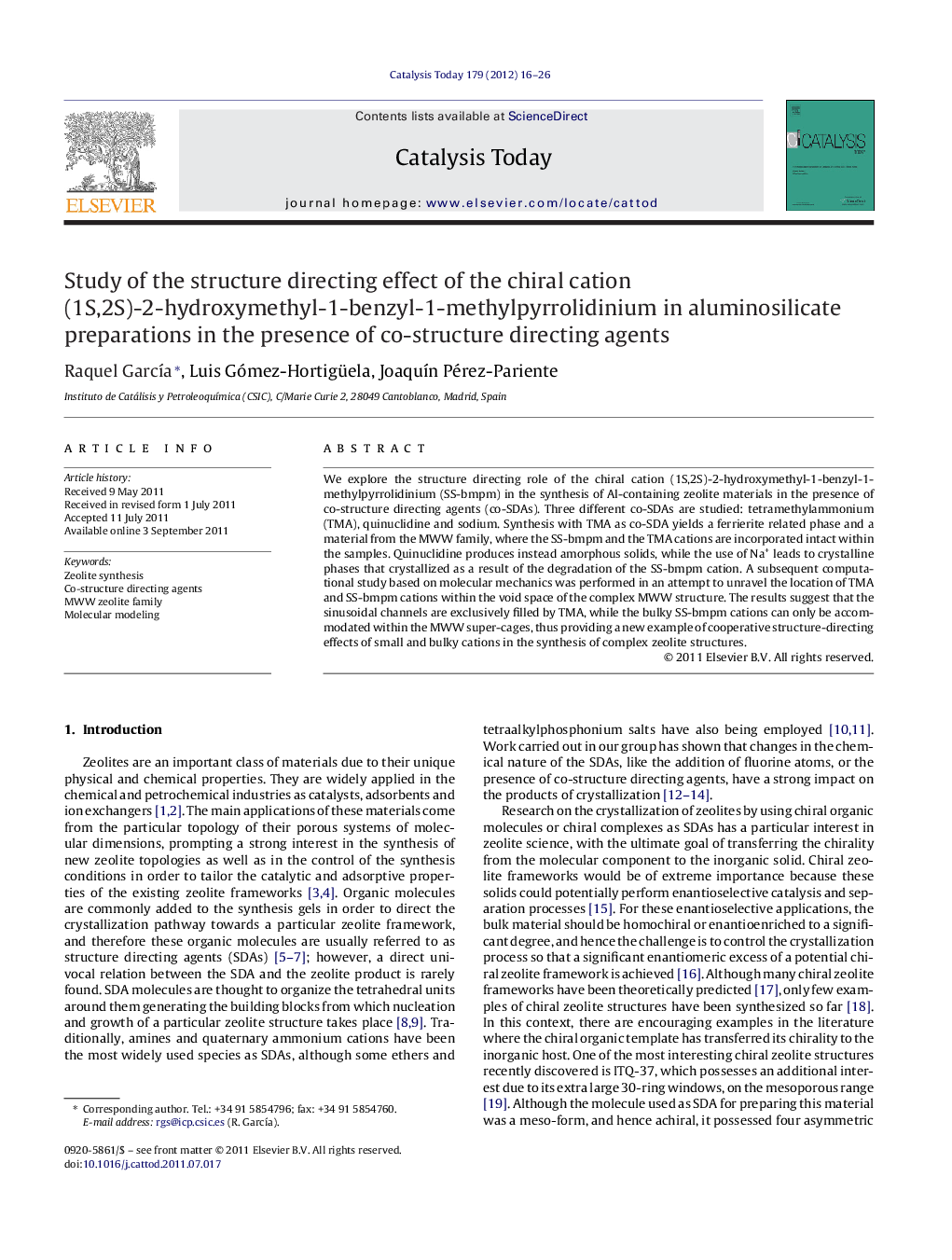| Article ID | Journal | Published Year | Pages | File Type |
|---|---|---|---|---|
| 55609 | Catalysis Today | 2012 | 11 Pages |
We explore the structure directing role of the chiral cation (1S,2S)-2-hydroxymethyl-1-benzyl-1-methylpyrrolidinium (SS-bmpm) in the synthesis of Al-containing zeolite materials in the presence of co-structure directing agents (co-SDAs). Three different co-SDAs are studied: tetramethylammonium (TMA), quinuclidine and sodium. Synthesis with TMA as co-SDA yields a ferrierite related phase and a material from the MWW family, where the SS-bmpm and the TMA cations are incorporated intact within the samples. Quinuclidine produces instead amorphous solids, while the use of Na+ leads to crystalline phases that crystallized as a result of the degradation of the SS-bmpm cation. A subsequent computational study based on molecular mechanics was performed in an attempt to unravel the location of TMA and SS-bmpm cations within the void space of the complex MWW structure. The results suggest that the sinusoidal channels are exclusively filled by TMA, while the bulky SS-bmpm cations can only be accommodated within the MWW super-cages, thus providing a new example of cooperative structure-directing effects of small and bulky cations in the synthesis of complex zeolite structures.
Graphical abstractFigure optionsDownload full-size imageDownload high-quality image (435 K)Download as PowerPoint slideHighlights► Structure directing effect of a chiral cation alone or with different co-structure directing agents. ► A material from the MWW family obtained with the chiral cation and tetramethylammonium within the zeolite pores. ► Molecular mechanics calculations used to understand the filling of the void space in the MWW structure.
